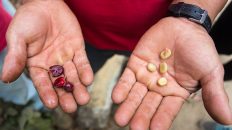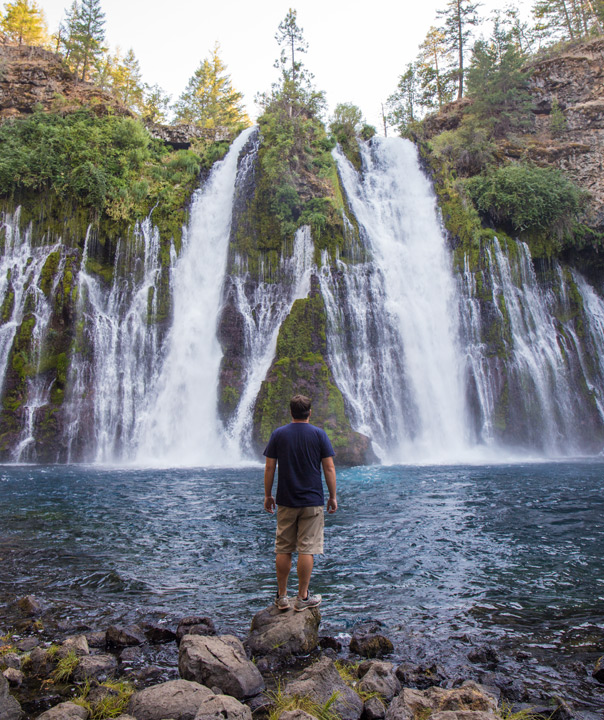A good friend of mine is down in Guatemala working on setting up a textile company that promotes women working in the culture called Ara Collective. I got the unique opportunity to go down and visit her last month, during which she connected me with Maya Traditions to see a demo of some of the hand-dying processes the women use to make the beautiful fabrics. The tour was in the small town of San Juan which is on Lake Atitlan and which is one of the premier places for this technique. You can book the same tour through this website if you are interested in seeing this process as well. It was a fantastic way to get to know the culture and see the amazing skills these women have, here is all the info.

After docking our water taxi at the stop for San Juan La Laguna (yes you have to take a boat to get here) we were greeted by our guide who took us through the streets of shops to get to the women’s house who would be doing the demonstration. The non-profit works with over 14 women, each of which specialize in a different part of the process, when we watched the demonstration they each showed different parts, while our guide translated what they were telling us. The process was as follows, even though I am sure I am probably leaving something out.
The Dying

In order to get the rich colors that the area is known for the women go out and find plants that produce these colors. The one we saw was a flower that produced a bright yellow color.
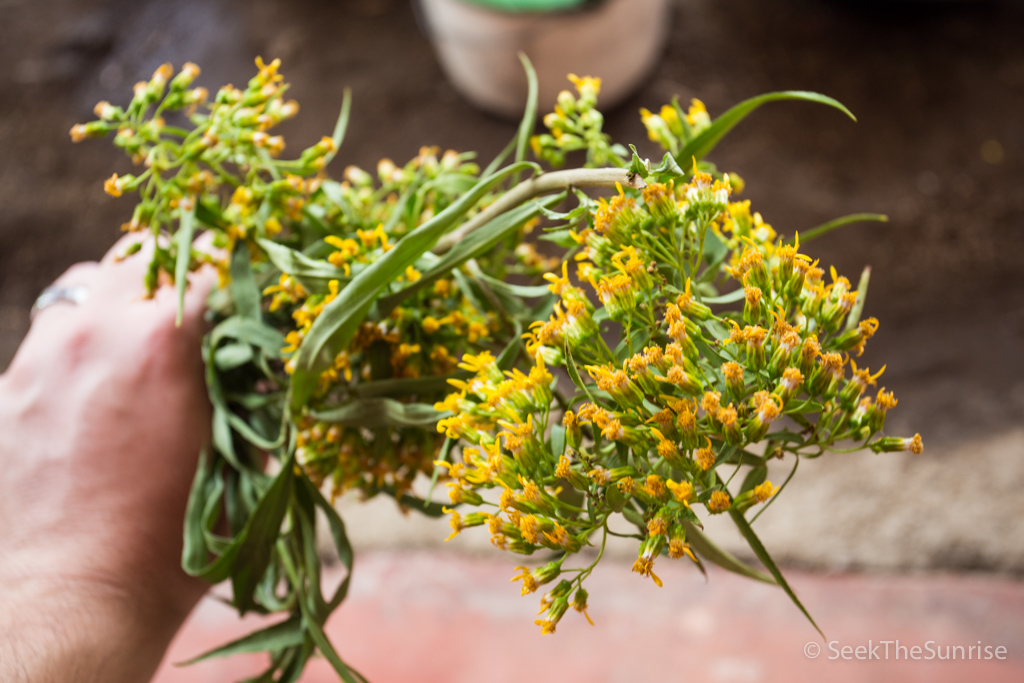
After dipping the fabric in this color they move it to a liquid made from banana branches which helps to attach the color to the fabric. Almost immediately it was able to be held and looked at by us and the yellow was very rich. I am told that hand-dying actually produces a color that attaches to the fabric better then normal dying techniques.
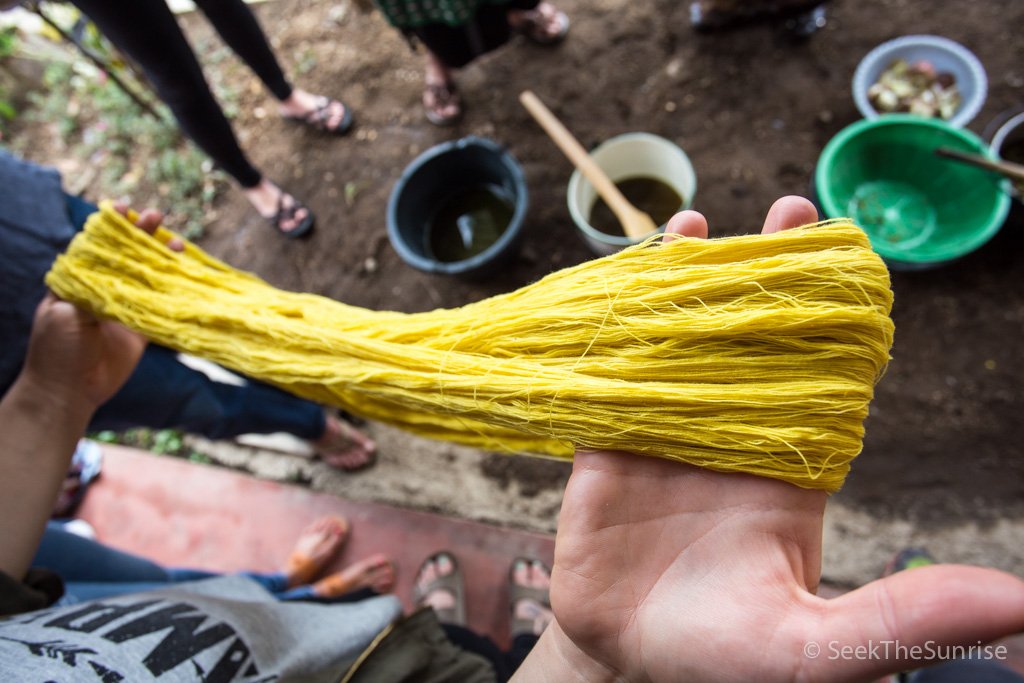
The Weaving
Next the fabric is wound around a spinner and put into a ball. This is what they will use to create the scarves and other textiles later.
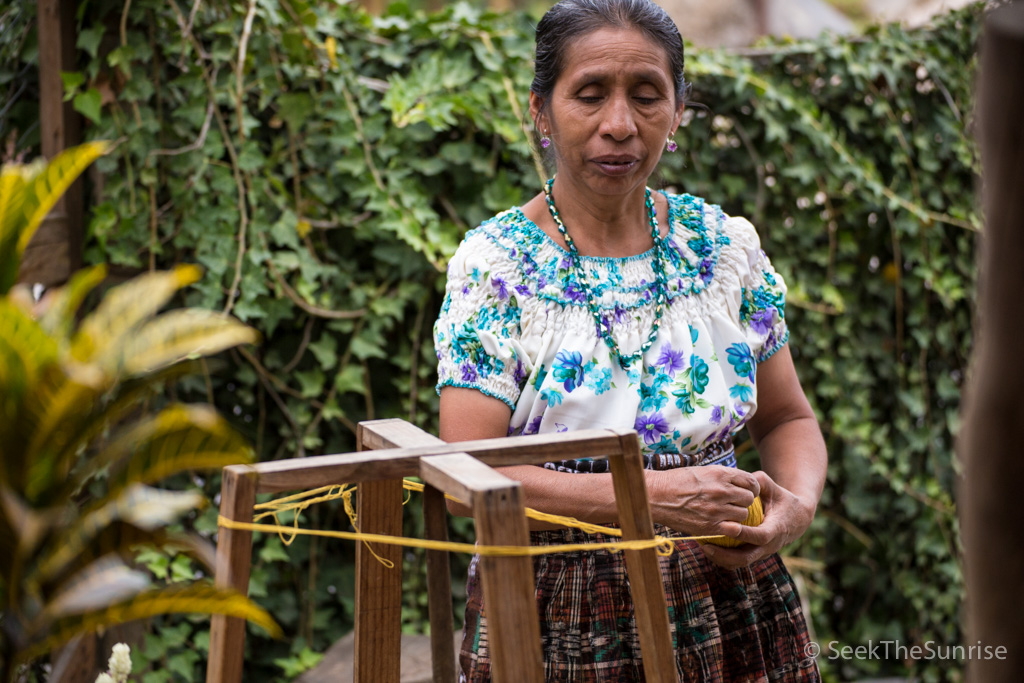
From there it gets organized into the shape and design it will be when it is weaved. This process is almost like a big puzzle piece that it is strewn around and it seemed pretty amazing that they were able to remember how it all should flow.
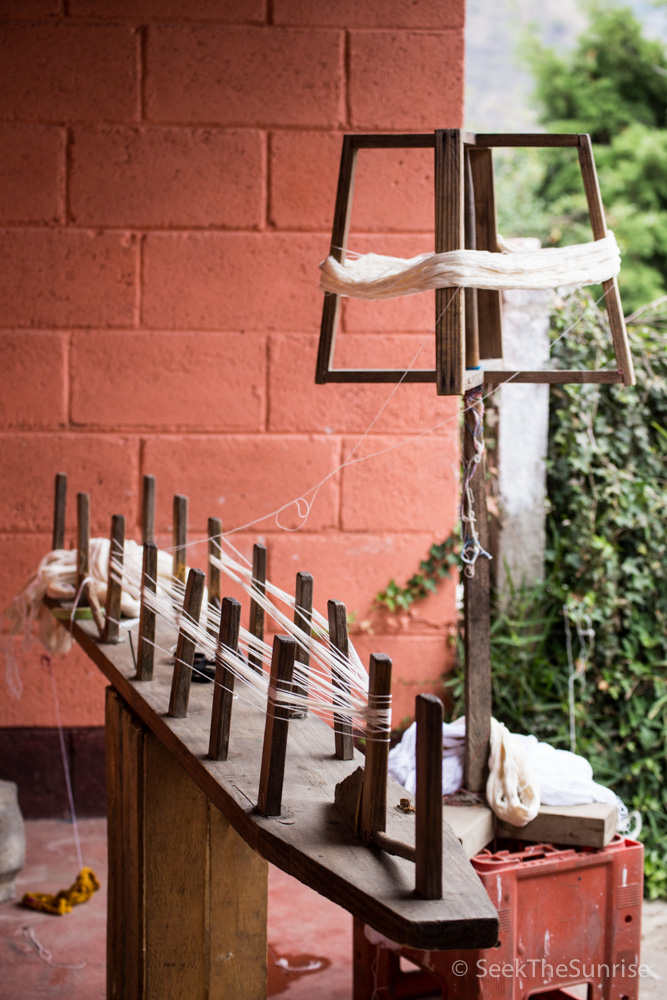
Then the fabric is moved to the long system called backstrap weaving that they use to actually put it all together. It is crazy how the fabric is tied to a tree then attached around the back of the woman that is using it.

The women providing the demonstration was extremely fast working through the process and it was amazing to see her work.
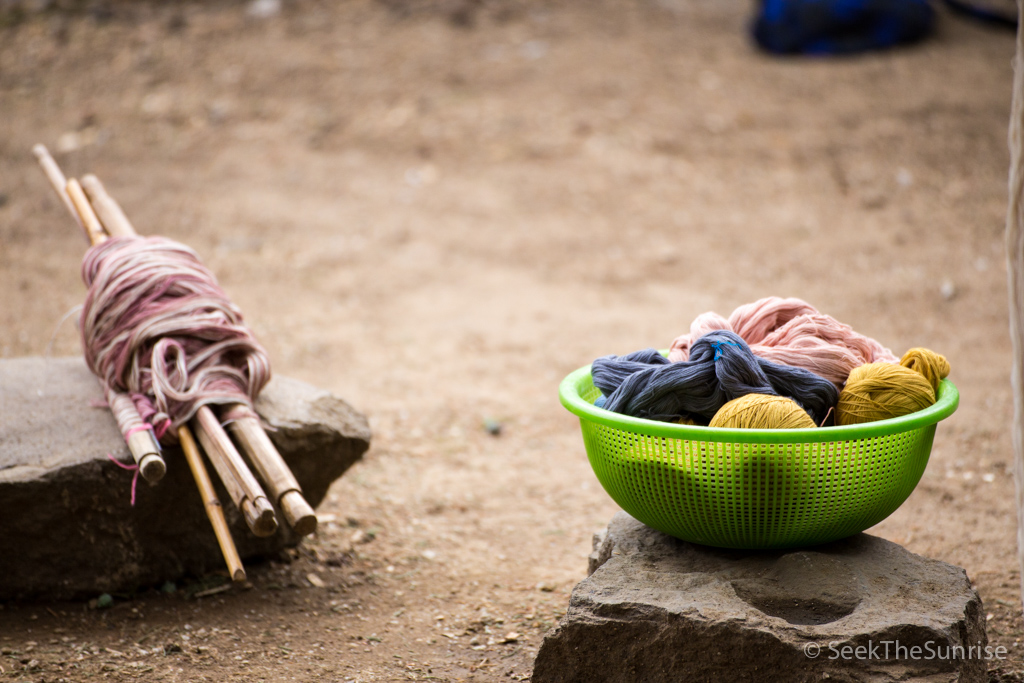
This entire demonstration took around 45 minutes and there was time for questions about the process afterwards.
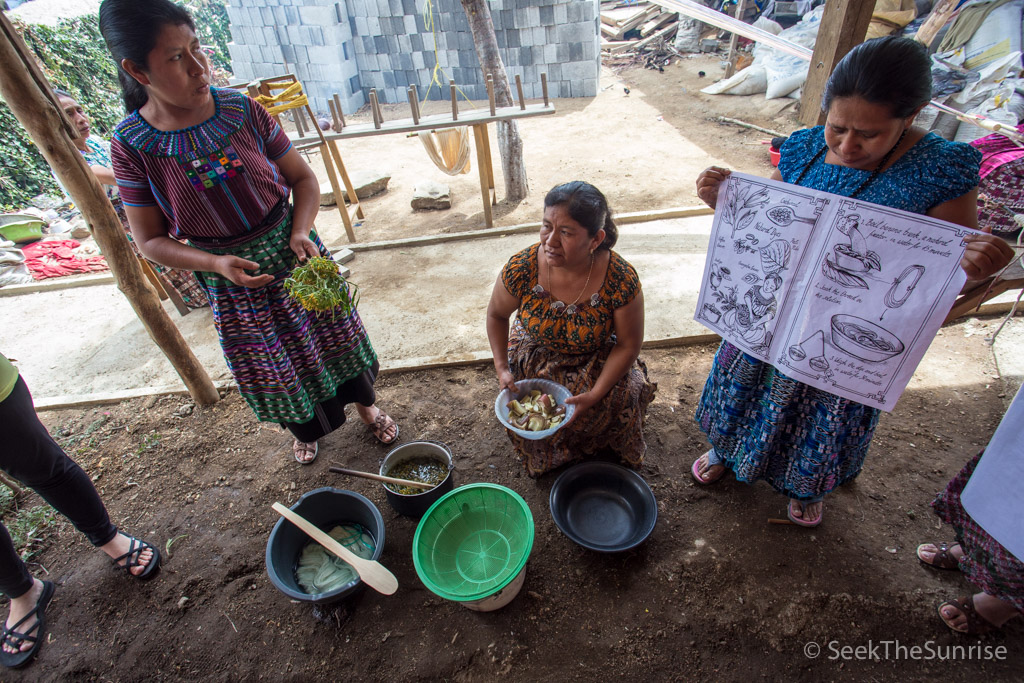
After the demonstration the women brought out some of their pieces that did not make it to the market for one reason or another and you can buy them directly from them women that made them. It is amazing to see such beautiful work go for such a small amount of money in USD but these are great wages for the women that made them.

My wife took home a few pieces and the woman that made them was incredibly happy to see her work picked from the bunch. All in all this is a great way to get a better understanding of the textiles that are produced in Guatemala and the process used to produce the rich colors. I highly recommend setting up a tour if you are spending time on Lake Atitlan and make sure to check out my friends company Ara Collective to purchase pieces like this.



